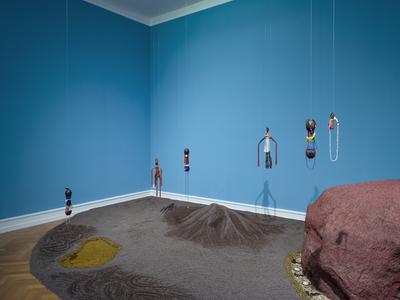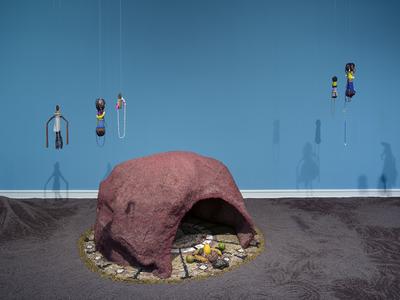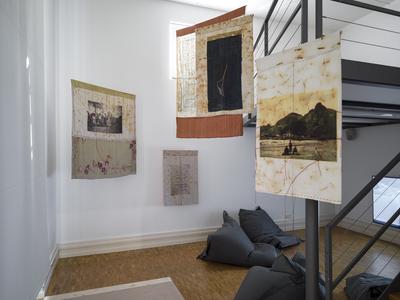Listen to the audioguide.
In her first solo exhibition in Switzerland, Namibian artist Tuli Mekondjo (*1982) presents a practice and process in which history, materiality and spirituality are interwoven. Her works deal with Namibia's colonial past and its repercussions, still felt today – from cultural erasure and forced labour, to social trauma and fragmentation.
Central to her work is the reclaiming of cultural assets and access to colonial archives that document the colonial legacy – and in which the knowledge and voices of those affected are often missing. Mekondjo questions the role of Western institutions as custodians and interpreters of such materials and demands visibility and participation of the communities related to them.
At Kunsthalle Bern, Tuli Mekondjo presents a commissioned expansive installation exploring the European collections of ‘crafted children’, which in Western ethnography is called fertility dolls. Restoring fertility channels as a healing process and a way to connect with and honor her ancestors is central to Mekondjo’s engagement with her own biography. She recreates these ‘crafted children’ which served a symbolic purpose of a woman having offspring. Today they only exist in the collections of ethnographic museums. In Switzerland, the Musée d’ethnographie de Neuchâtel – an institution with which the artist and Kunsthalle Bern were in dialogue for this exhibition – provided a ‘crafted child’, a rare example of one that has a name: Nadula.
In a second installation, that incorporates historical photographs from European archives, the viewer is reminded of the impact of colonial violence through works of textile, photography, video and archival material. For instance, the forced adoption of Western clothing and hairstyles on Namibian domestic workers in white households reminds us, how cultural identity was erased in the same violent and swift way as artifacts were removed from their local context by missionaries, ethnographers and travelers. Their absence severing the transmission of ancestral knowledges, resulting in intergenerational trauma across Namibia’s various social groups.
The artist offers a counter-narrative that keeps memory alive, reclaiming these archives and images by reinterpreting them instead of leaving them hidden in museums and archives – as resistance, as reclamation, as healing.
The exhibition is kindly supported by the Ruth & Arthur Scherbarth Stiftung.



